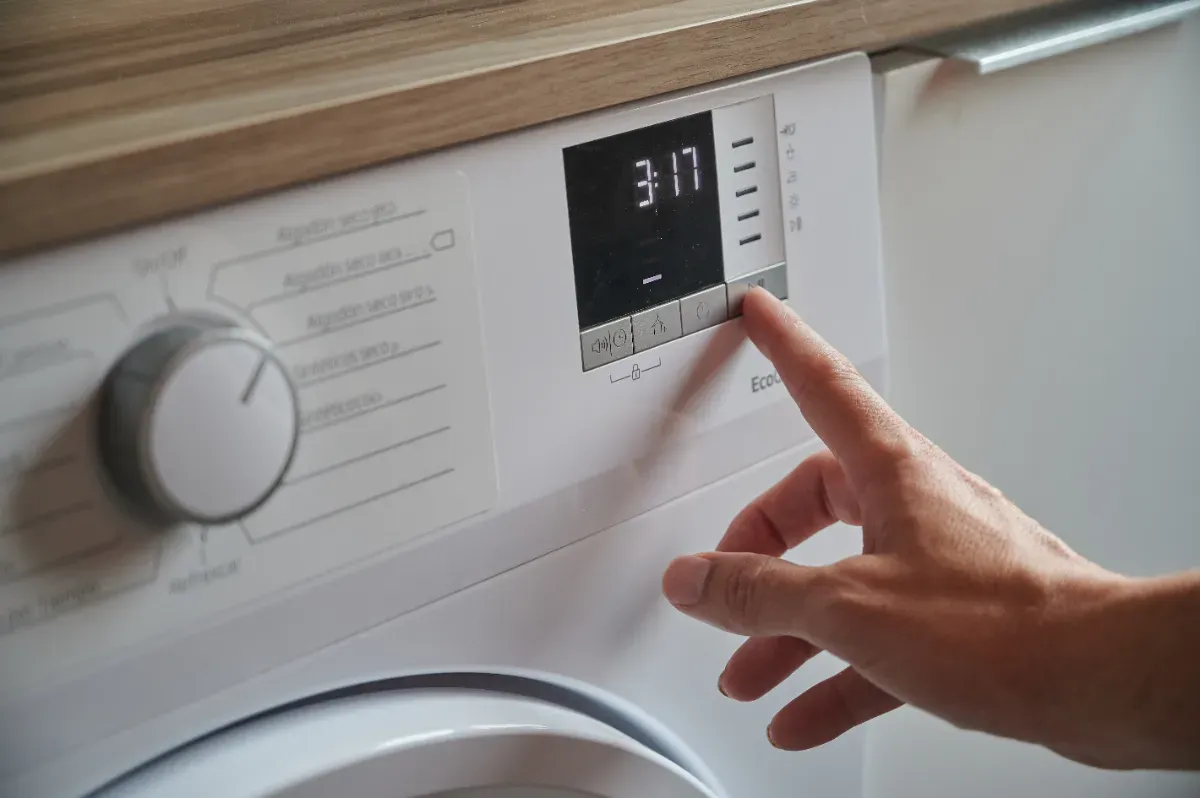Manufacturers Won’t Tell You This: Press Two Buttons and Your Washing Machine Cleans Itself

Washing machines make our daily lives easier, but they can sometimes be a real pain. Issues like a musty smell, poor water drainage, or mold around the door can turn a helpful appliance into a hassle. Luckily, many of these problems have an easy fix that often goes unnoticed.
The Magic of the Self-Cleaning Feature
Many modern washers come with a self-cleaning function that takes care of common problems without much effort. With just a few button presses, this built-in feature clears out dirt buildup and bad odors. Interestingly, a lot of folks don’t even know their machine can do this.
Often, manufacturers focus on pushing their cleaning products instead of shining a light on this handy free feature. This means you might end up spending extra money on cleaning supplies when your machine already has the fix built in.
Perks of Regular Self-Cleaning
Using the self-cleaning function has plenty of upsides. For starters, it fights off stubborn residue and soap buildup, keeping your drum spotless and free from mold. This simple maintenance step stops bad smells from setting in. Also, running this cycle from time to time can help your machine last longer by cutting down on issues that might otherwise cause breakdowns.
Since the washer handles all the cleaning by itself during this cycle, there’s no need to shell out cash on pricey cleaning products. This keeps your laundry routine friendly to both your budget and the environment.
How to Start the Self-Cleaning Cycle
Getting the self-cleaning cycle going is pretty simple once you know where to look. Check your control panel for buttons labeled ‘Intensive Wash’ or ‘Anti-Crease’—these usually hint at the self-cleaning mode. In some models, you might spot an icon that looks like a star or an arch.
To kick off the cycle, press these two buttons at the same time for about 2 to 3 seconds until you see ‘Drum Clean’ light up on the display. Then hit ‘Start’ to begin the process. Remember, don’t add any extra cleaning agents during this cycle—let your washer do its thing on its own.
Running the machine empty, without detergent or laundry, makes sure it cleans itself properly without any interference.
Tackling Common Issues Head-On
If you’re dealing with problems like bad odors or grime buildup, starting with a self-cleaning cycle is a great move. Wiping the door dry after every wash also helps keep things fresh and clean. And if poor water drainage is bugging you, make it a habit to check and clean the drain pump filter regularly.
Apart from using the self-cleaning cycle, a few simple maintenance habits can really improve your washing experience. Leaving the door and rubber seal open after each wash lets them dry out properly and helps keep mold at bay. Also, giving the drain pump filter a rinse every two months goes a long way toward keeping everything running smoothly.
For even more ease and energy savings, you might want to look into washers that come with automatic dosing or smart fault detection features.
A Real-Life Success Story
I used to struggle with a smelly washing machine, and it was seriously frustrating. But ever since I started using the self-cleaning function every month and leaving the door open after each cycle, those issues have vanished. It’s really reassuring to know that you don’t need harsh chemicals to get fresh laundry.
Following these simple tips not only keeps your machine working better but also gives you peace of mind knowing you’re making smart choices to keep costs down and extend your washer’s life. By making the most of built-in features like the self-cleaning cycle and sticking to some easy maintenance habits, you can enjoy fewer breakdowns and fresher laundry every day.